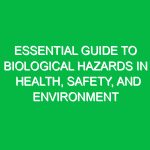Introduction to Winter Weather Driving
Hello team! Today, we’re gathered for a toolbox talk focused on an essential topic: winter weather driving. As winter approaches, we need to be extra vigilant while traveling, especially if your job requires you to drive in snowy or icy conditions. This talk is designed to equip you with the knowledge and skills necessary to navigate winter roads safely and effectively, ensuring both your Safety and that of your colleagues.
Understanding the Hazards of Winter Weather Driving
Winter weather presents unique challenges that can drastically affect driving conditions. Ice, snow, and reduced visibility can create hazardous situations for even the most experienced drivers. Understanding these Hazards is the first step in improving our Safety on the road.
- Ice Formation: Ice can form unexpectedly on roads, especially black ice, which is nearly invisible. It often occurs in shaded areas and bridges.
- Snow Accumulation: Heavy snowfall can reduce visibility and traction, making it difficult to control the vehicle.
- Reduced Daylight: Shorter days during winter mean more driving in the dark, which can increase the likelihood of accidents.
- Cold Weather Effects: Extremely low temperatures can affect vehicle performance, particularly batteries and tire pressure.
Preparing Your Vehicle for Winter Weather Driving
Before hitting the road, it’s crucial to ensure your vehicle is prepared for winter conditions. Here are some essential checks:
- Check Your Tires: Ensure your tires have adequate tread and consider switching to winter tires for better traction.
- Test Your Battery: Cold weather can reduce battery power. Have your battery tested to ensure it’s in good condition.
- Inspect Wipers and Fluid: Make sure your windshield wipers are functioning correctly and fill your washer fluid with a winter formula to prevent freezing.
- Keep Your Fuel Tank Full: A full tank helps prevent the fuel line from freezing and gives you extra fuel in case you get stuck.
- Emergency Kit: Always carry an emergency kit that includes blankets, snacks, water, a flashlight, and basic tools.
Driving Techniques for Winter Weather
Even with a well-prepared vehicle, the way you drive is critical in winter conditions. Here are some driving techniques to keep in mind:
- Slow Down: Reducing your speed is one of the easiest ways to maintain control. It gives you more time to react to hazards.
- Increase Following Distance: Allow for at least 6-8 seconds of following distance behind the vehicle in front of you to give ample time for braking.
- Use Smooth Movements: Make gentle adjustments to your steering, acceleration, and braking to avoid skidding.
- Avoid Sudden Stops: If you need to stop, do so slowly to prevent sliding. If you start to skid, steer in the direction you want to go.
- Use Low Beams: In snowy or foggy conditions, use low beam headlights to improve visibility.
Recognizing and Responding to Skidding
Skidding can occur unexpectedly, and knowing how to respond can prevent accidents:
- Stay Calm: Panicking can lead to overcorrecting, making the situation worse.
- Steer into the Skid: If your rear wheels are sliding, steer in the direction you want to go to regain control.
- Avoid Braking Hard: Instead of slamming on the brakes, ease off the accelerator and steer smoothly.
Real-Life Examples of Winter Weather Driving Challenges
Let’s look at a couple of real-life scenarios to illustrate the importance of these tips:
Example 1: The Icy Road
Imagine you’re driving home after a long day at work, and you encounter an icy stretch of road. Despite having winter tires, you notice other vehicles slipping and sliding. By remembering to reduce your speed and increase your following distance, you navigate this section safely, while others struggle.
Example 2: Low Visibility
Picture a snowy evening where visibility is significantly reduced. You decide to turn on your low beams as recommended. This simple action helps you see the road ahead and ensures that drivers behind you can see your vehicle, significantly reducing the chances of an accident.
Regulations and Standards Related to Winter Weather Driving
It’s essential to be aware of any Regulations or company policies regarding winter weather driving. Compliance not only enhances safety but also fulfills legal obligations. For instance, many companies require drivers to complete safety Training specific to winter conditions. Familiarize yourself with your organization’s policies, as they often include:
- Mandatory use of vehicles equipped for winter conditions.
- Reporting of any incidents or close calls to improve Safety Measures.
- Regular checks of driving logs to ensure compliance with safety protocols.
Discussion and Engagement
Now that we’ve covered a lot of ground, let’s open the floor for discussion. What experiences have you had while driving in winter conditions? Are there any specific situations that made you rethink your approach to winter weather driving? Sharing these insights can help us all learn and improve our safety practices.
Conclusion: The Importance of Safe Winter Weather Driving
In conclusion, winter weather driving requires preparation, caution, and a solid understanding of the risks involved. By following the tips and techniques discussed today, we can help prevent accidents and ensure a safe work Environment. Always remember to check your vehicle, adjust your driving habits, and stay informed about the conditions.
Thank you all for your attention and commitment to safety. Let’s work together to make this winter season safe for everyone on the road!


